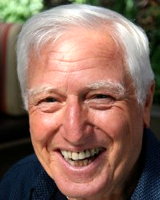
|
Folk Dance Federation of California, South, Inc.
|

|
CLICK AN IMAGE TO ENLARGE
 Do you remember the seventies and the old 33rpm big long play (LP) records we used to lug in large record boxes? Just the mention of them brings back memories of bell bottom jeans and long hair. I still have a whole collection of them with titles such as: Silver String Macedonian Band, NAMA Orchestra, Festival Records, Folkdance Underground, and many more privately issued by the various visiting teachers.
Do you remember the seventies and the old 33rpm big long play (LP) records we used to lug in large record boxes? Just the mention of them brings back memories of bell bottom jeans and long hair. I still have a whole collection of them with titles such as: Silver String Macedonian Band, NAMA Orchestra, Festival Records, Folkdance Underground, and many more privately issued by the various visiting teachers.
Running a dance program using the LPs was not too difficult, once you found the right groove on the right record,
I am not sure exactly when, but the music from those records migrated, first to regular tape cassettes that recorded music on both sides. While they were much smaller, finding the right song was quite a task. It required rewinding the tape, setting the counter to zero, and fast forwarding to the right reading of the counter.
With the introduction of short tape cassettes used for computer programming, someone found out that you could record a single song on each side of such a cassette. All you had to do is to fast forward to the end, which made the tape counter obsolete. Additionally, these tapes were white and you could write the song names on them with indelible markers, making the search for the right cassette easy.
However, progress moves on and the compact disk (CD) became the widely accepted method of recording music. Initially it was impossible to copy the CDs, but soon, as the computer CD burners became affordable, whole folkdance libraries of local dance clubs were transferred to just a few CDs. Besides making it easy to carry just a dozen CDs, programming was just a matter of dialing the right number with a remote control unit. Introduction of Motion Picture Experts Group (MPEG) Audio Layer 3, or MP3, further compressed the songs, squeezing whole song collections onto one or two CDs.
Would you believe today, with the proliferation of the iPod type of miniature hard drive recorders, a whole dance club library can be stored in a device the size of a deck of cards!
What does the future hold? Will we have an implantable device, allowing us to just think of the song and instantly hear it in our brain? What would be very useful for me, is an implantable device that would remember the steps to the dances as well.
So what is the point?
We are all guilty of copying music. Is it right or wrong? I will not be a fool and step in, where wise men dare not tread and delve into the recording copyright laws.
One thing I do know; our "Cohanim," the keepers of the folkdance faith, the teachers, and musicians invested an inordinate time and effort recording, learning, and teaching the dances to us. It is only fair that we reward and support them. As they say, "Be a mensch" (be a man) and besides paying the admission fee to the teaching sessions, buy their CDs and the material they sell. I am sure they will not object, if for convenience, you copy only once the music from the CDs you bought to the group CD library. However, it is crucial for the future of our folk dance community that we support and nurture our "Cohanim," the keepers of the folkdance faith.
So buy their CDs!
As appearing in "Dancing with Two Left Feet (5)," Folk Dance Scene.
Used with permission of the author.